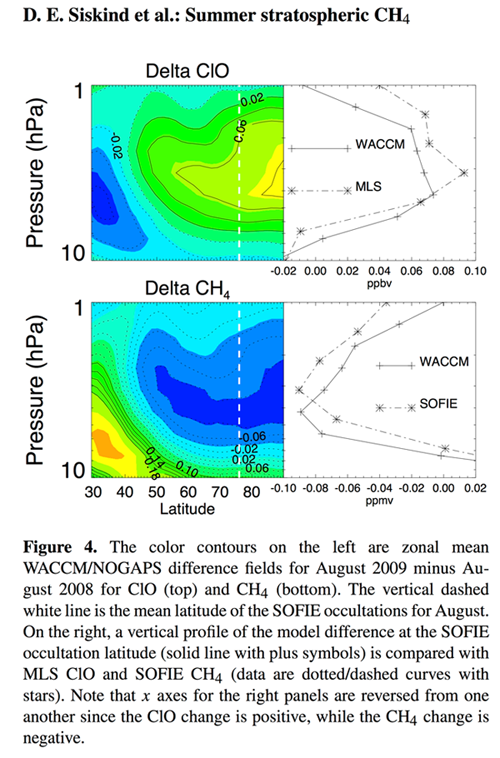|
STATUS:
06.06.2017
Instrument Status:
The AIM spacecraft continues to perform well.
SOFIE
As of February 2017, the AIM orbit plane is nearly perpendicular to the Earth - sun vector. As a result the sun does not rise or set as viewed from the satellite, and SOFIE measurements are not possible. This will change by early October, 2017, when SOFIE will resume measurements. SOFIE science and housekeeping parameters all indicate a stable and healthy instrument. SOFIE V1.3 data are available online through February 2017.
Siskind et al. [2016] used SOFIE and MLS satellite data to categorized the inter-annual variability of winter and springtime upper stratospheric methane (CH4). They showed the effects of this variability on the chemistry of the upper stratosphere throughout the following summer. Years with strong wintertime mesospheric descent followed by dynamically quiet springs, such as 2009, lead to the lowest summertime CH4. Years with relatively weak wintertime descent, but strong springtime planetary wave activity, such as 2011, have the highest summertime CH4. By sampling Aura MLS to the SOFIE measurement locations, it was demonstrated that summertime upper stratospheric ClO almost perfectly anti-correlates with the CH4 (see Figure below, which is from Siskind et al., 2016). This is consistent with the reaction of atomic chlorine with CH4 to form the reservoir species, hydrochloric acid (HCl). The summertime ClO for years with strong uninterrupted mesospheric descent is about 50% greater than in years with strong horizontal transport and mixing of high CH4 air from lower latitudes. Small, but persistent effects on ozone are also seen such that between 1 and 2 hPa, ozone is about 4–5% higher in summer for the years with the highest CH4 relative to the lowest. This is consistent with the role of the chlorine catalytic cycle on ozone. These dependencies may offer a means to monitor dynamical effects on the high-latitude upper stratosphere using summertime ClO measurements as a proxy. Additionally, these chlorine-controlled ozone decreases, which are seen to maximize after years with strong uninterrupted wintertime descent, represent a new mechanism by which mesospheric descent can affect polar ozone. Finally, given that the effects on ozone appear to persist much of the rest of the year, the consideration of winter/spring dynamical variability may also be relevant in studies of ozone trends.
Siskind, D. E., G. E. Nedoluha, F. Sassi, P. Rong, S. M. Bailey, M. E. Hervig (2016), Persistence of upper stratospheric winter time tracer variability into the Arctic spring and summer, Atmos. Chem. Phys., doi:10.5194/acp-2015-1037.

|
